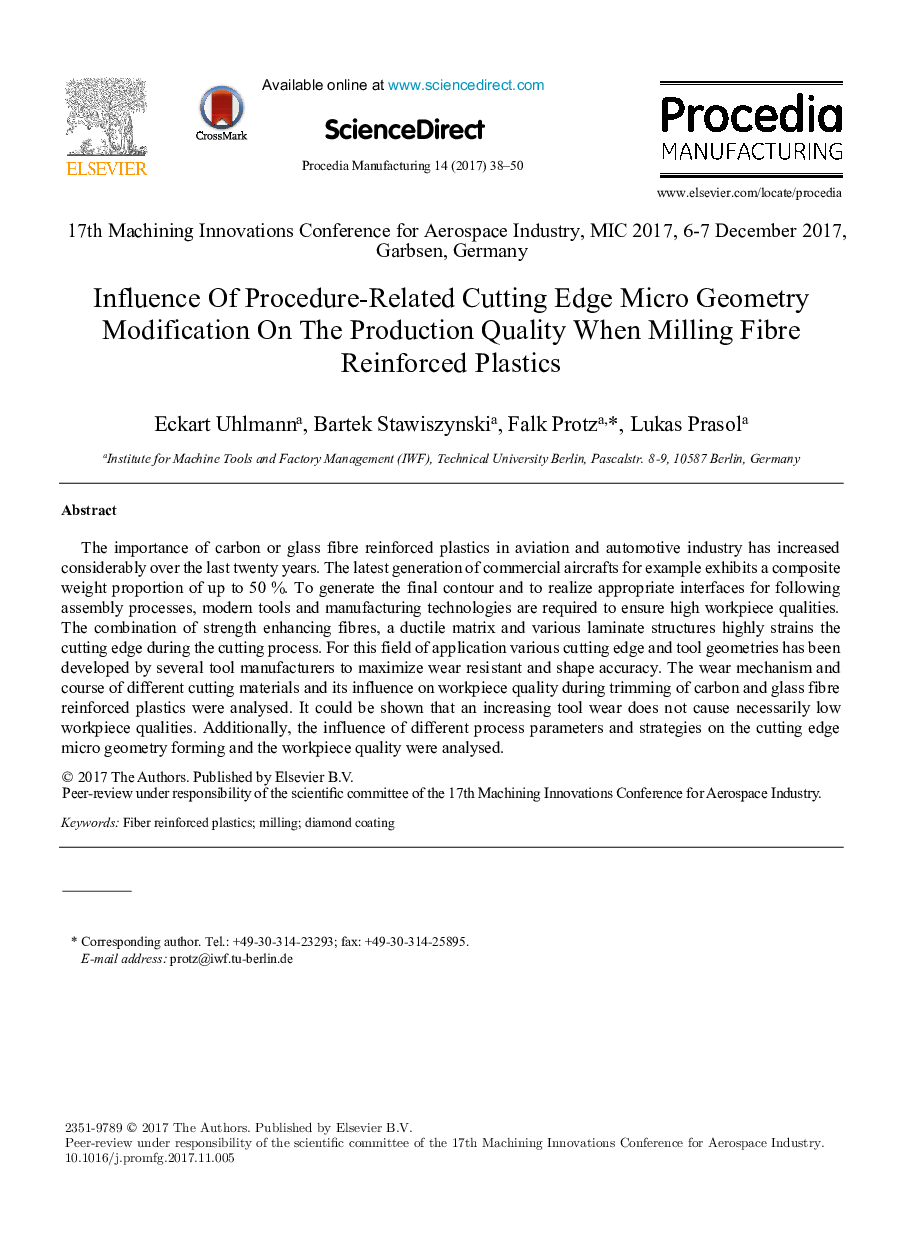| Article ID | Journal | Published Year | Pages | File Type |
|---|---|---|---|---|
| 7545603 | Procedia Manufacturing | 2017 | 13 Pages |
Abstract
The importance of carbon or glass fibre reinforced plastics in aviation and automotive industry has increased considerably over the last twenty years. The latest generation of commercial aircrafts for example exhibits a composite weight proportion of up to 50 %. To generate the final contour and to realize appropriate interfaces for following assembly processes, modern tools and manufacturing technologies are required to ensure high workpiece qualities. The combination of strength enhancing fibres, a ductile matrix and various laminate structures highly strains the cutting edge during the cutting process. For this field of application various cutting edge and tool geometries has been developed by several tool manufacturers to maximize wear resistant and shape accuracy. The wear mechanism and course of different cutting materials and its influence on workpiece quality during trimming of carbon and glass fibre reinforced plastics were analysed. It could be shown that an increasing tool wear does not cause necessarily low workpiece qualities. Additionally, the influence of different process parameters and strategies on the cutting edge micro geometry forming and the workpiece quality were analysed.
Related Topics
Physical Sciences and Engineering
Engineering
Industrial and Manufacturing Engineering
Authors
Eckart Uhlmann, Bartek Stawiszynski, Falk Protz, Lukas Prasol,
